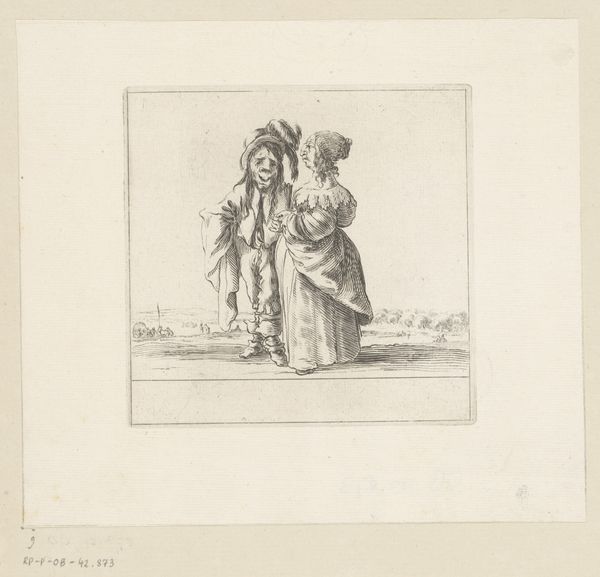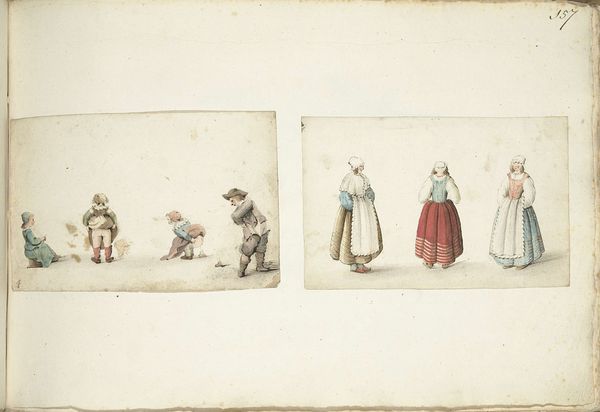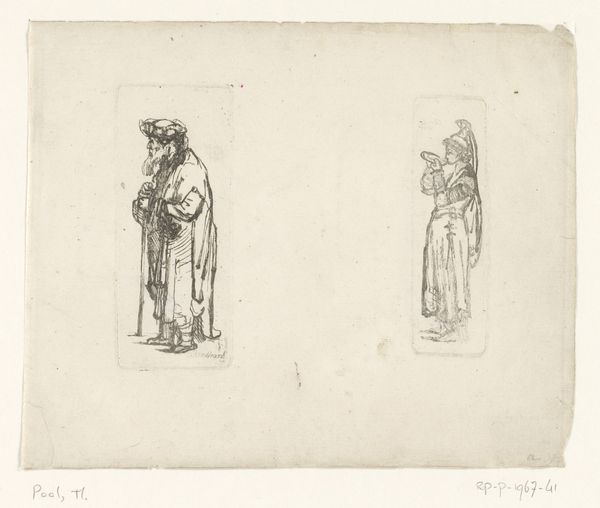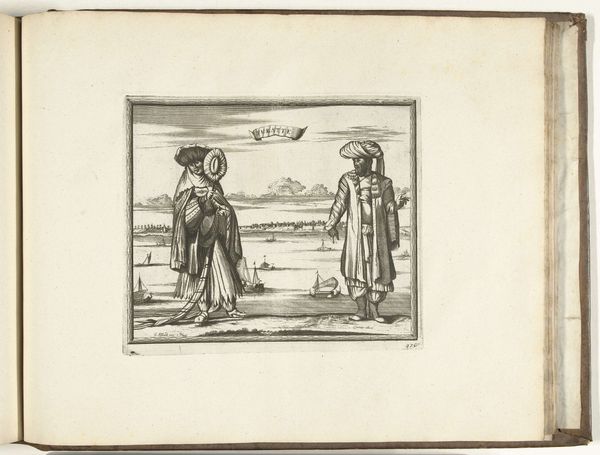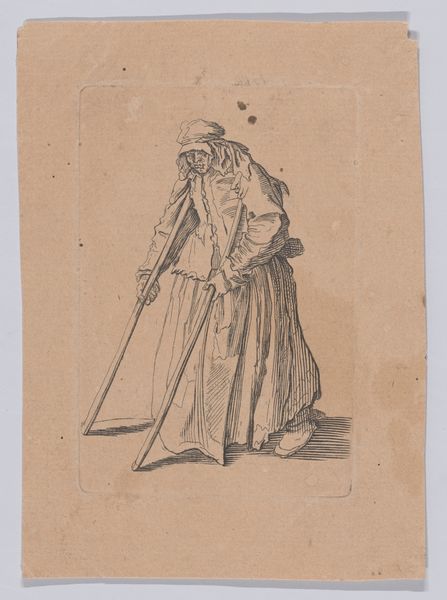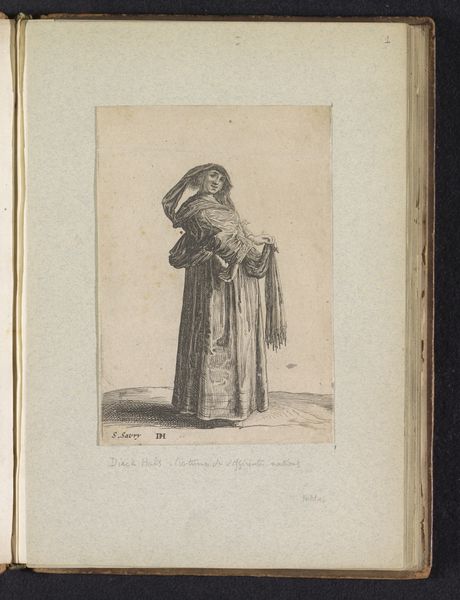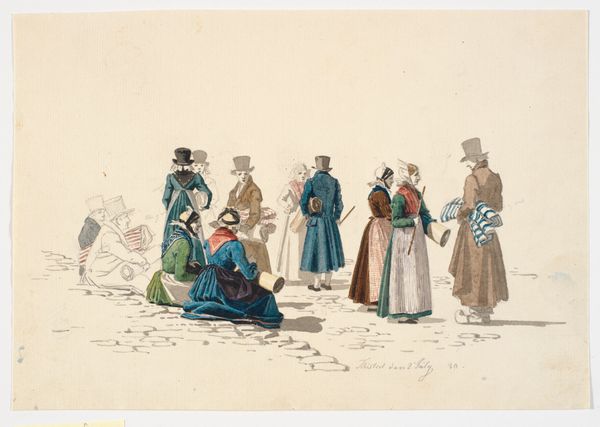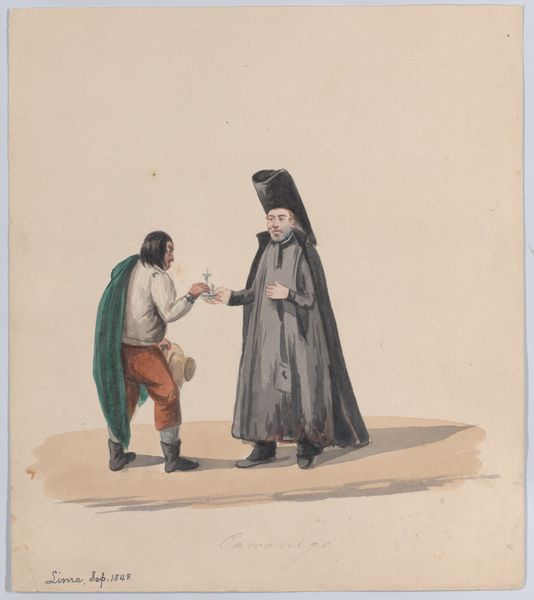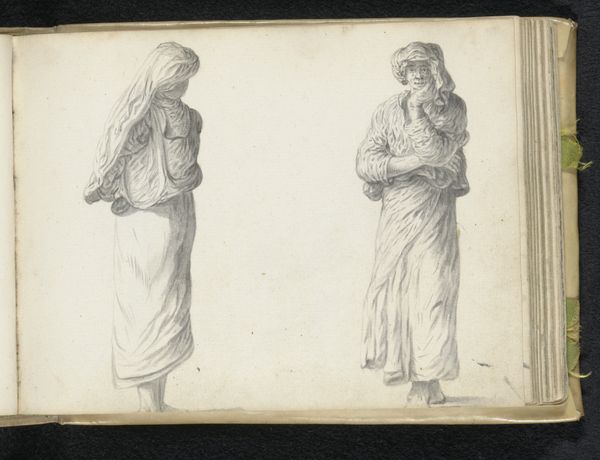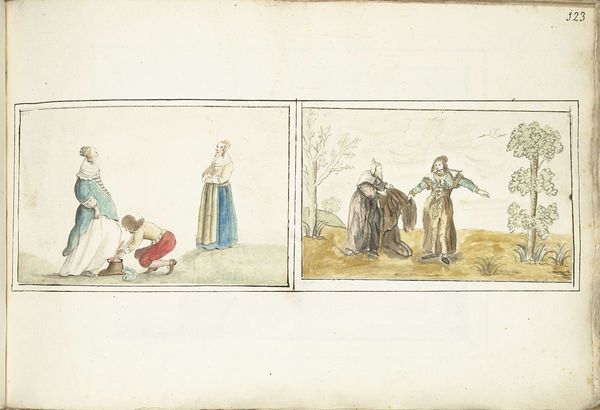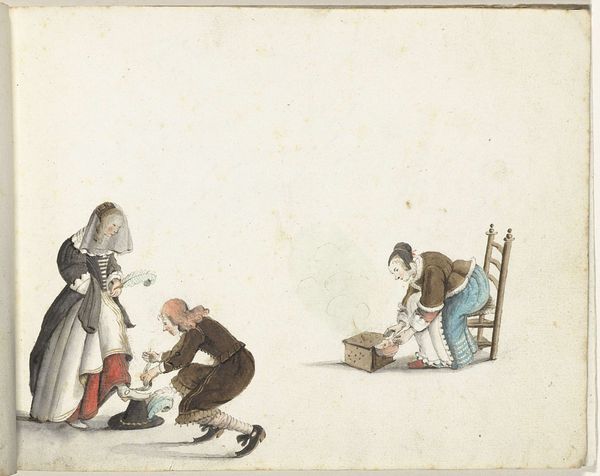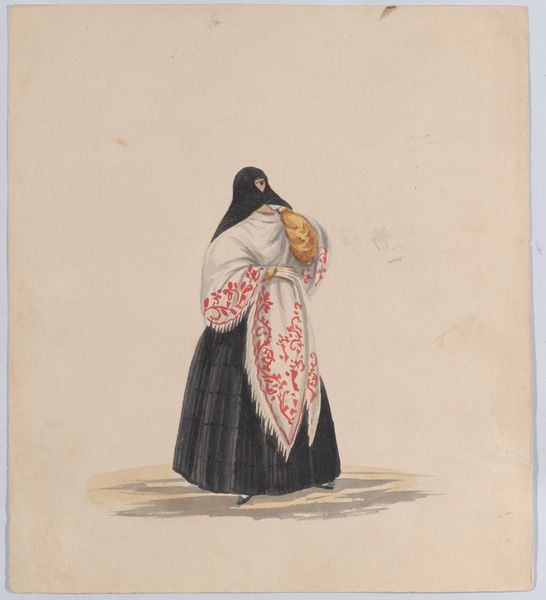
drawing, mixed-media, coloured-pencil, paper, watercolor, ink
#
portrait
#
drawing
#
mixed-media
#
coloured-pencil
#
water colours
#
muted colour palette
#
dutch-golden-age
#
paper
#
watercolor
#
ink
#
coloured pencil
#
genre-painting
#
mixed media
Dimensions: height 308 mm, width 202 mm
Copyright: Rijks Museum: Open Domain
Editor: This mixed-media drawing, "Heer en dame kussend en een vrouw van achteren," by Gesina ter Borch, dates to 1654. It’s currently held in the Rijksmuseum. The artwork depicts a kissing couple with another woman on the side, rendered with delicate watercolor and colored pencil. I'm struck by how the figures are positioned in what looks like an everyday interaction, a forbidden kiss, perhaps. How do you interpret the scene and the artist’s intention here? Curator: Considering the social context of the Dutch Golden Age, Ter Borch provides us with a glimpse into gender roles and social expectations. Notice the contrasting presentation of the women. The embracing woman seems unconcerned by propriety, whereas the other stands alone, almost disapproving, veiled and distanced. This immediately brings questions to my mind: What did female agency look like? Editor: The woman in the veil seems almost like a voyeur. Is it a moral judgement? Curator: Perhaps. Or perhaps, the work seeks to draw us into the gaze *of* a woman existing on the margins, reflecting on how rigid social structures forced many into these roles. In that sense, the image becomes not simply a presentation of the social hierarchy, but an implicit question posed about how society constructs these roles. What if this picture invites reflection on those exclusions, instead of being complicit in them? Editor: That makes me see it in a completely new light. The drawing then challenges viewers to acknowledge the women whose stories often go unrecorded, questioning social norms. Curator: Precisely. Through a lens that acknowledges that history is made not only by Kings or military figures, but by everyone else involved. Editor: Thank you; this piece is much more intricate and telling than I had initially thought. Curator: Indeed, viewing it with those considerations reveals more about gender and society’s expectations in that era.
Comments
No comments
Be the first to comment and join the conversation on the ultimate creative platform.
